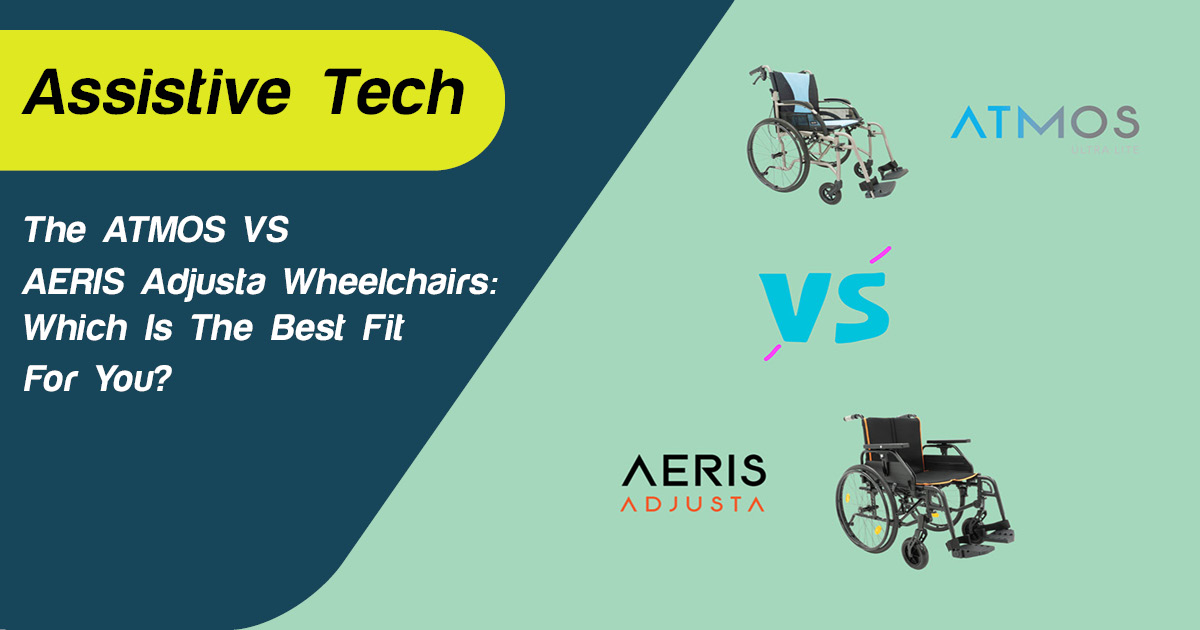
Share
Cerebral Palsy is a complex neurological disorder that affects an individual's motor skills, muscle tone, and overall physical function.
Unravelling the root causes of this condition is crucial for early diagnosis, effective management, and improving the quality of life for those affected. Here, we’ll delve into the multifaceted details of Cerebral Palsy, shedding light on the ingenetic, environmental, and perinatal factors contributing to this condition.
What is cerebral palsy?
Cerebral Palsy is a broad term encompassing various motor and movement disorders, each with unique characteristics and underlying causes. There are four main types of Cerebral Palsy:
- Spastic
- Dyskinetic
- Ataxic
- Mixed
These distinctions are based on the predominant movement patterns and the affected brain regions.
What is cerebral palsy?
Spastic Cerebral Palsy, the most common form, is characterised by stiff and rigid muscles, leading to awkward and uncoordinated movements. This type of Cerebral Palsy is often associated with damage to the motor cortex or the pyramidal tract, which controls voluntary muscle movement.
Dyskinetic Cerebral Palsy
Dyskinetic and athetoid or choreoathetoid Cerebral Palsy, are marked by slow and uncontrolled movements. This form of Cerebral Palsy is typically linked to damage to the basal ganglia, the part of the brain responsible for regulating voluntary movements.
Ataxic Cerebral Palsy
Ataxic Cerebral Palsy is characterised by poor balance, coordination, and depth perception. Individuals with this type of Cerebral Palsy often exhibit a wide-based, unsteady gait and difficulty with precise movements. Ataxic Cerebral Palsy is associated with damage to the cerebellum, the part of the brain that coordinates movement.
Mixed Cerebral Palsy
In some cases, individuals may exhibit a combination of the symptoms mentioned above, known as mixed Cerebral Palsy. This type of Cerebral Palsy reflects a more widespread or complex pattern of brain damage, often involving multiple brain regions.
Understanding the specific type of Cerebral Palsy is crucial, as it informs the clinical presentation.
What causes Cerebral Palsy?

Photo 151261904 © Marysmn | Dreamstime.com
The underlying causes of Cerebral Palsy can be broadly divided into two groups: congenital and acquired. Congenital Cerebral Palsy refers to cases where brain damage or abnormalities occur during foetal development, often before or during the birthing process. Common causes include:
- Genetic Abnormalities: Certain genetic mutations or chromosomal abnormalities can disrupt the normal development of the brain, leading to the characteristic motor and postural impairments associated with Cerebral Palsy.
- Maternal Infections, Fevers & Health Conditions: Infections or fevers experienced by the mother during pregnancy, like toxoplasmosis, rubella, cytomegalovirus, or herpes, can trigger an inflammatory response that can harm the developing foetal brain. Maternal health conditions like thyroid abnormalities and seizures can also increase the risk.
- Oxygen Deprivation: Prolonged periods of oxygen deprivation (asphyxia) to the foetus during pregnancy or the birthing process can result in brain damage and the subsequent development of Cerebral Palsy.
- Foetal Stroke: Blockages or ruptures in the blood vessels supplying the foetal brain can cause strokes, leading to localised brain damage and the manifestation of Cerebral Palsy.
- Premature Birth and Low Birth Weight: Premature infants (born before 37 weeks) and those with low birth weight (less than five pounds, eight ounces) are at a higher risk of developing Cerebral Palsy due to the vulnerability of their developing brains.
In contrast, acquired Cerebral Palsy refers to cases where brain damage or abnormalities occur after birth, often as a result of various medical conditions or traumatic events.
- Brain Infections: Infections of the brain, like meningitis or encephalitis, can lead to inflammation and subsequent damage to the brain, potentially resulting in Cerebral Palsy.
- Head Injuries: Traumatic brain injuries sustained during accidents, falls, or child abuse can disrupt normal brain function and lead to the development of Cerebral Palsy.
- Lack of Oxygen: Severe respiratory distress, near-drowning incidents, or other events that deprive the brain of oxygen can cause brain damage and the onset of Cerebral Palsy.
- Jaundice: Untreated or severe jaundice, a condition characterised by the buildup of bilirubin in the blood, can lead to brain damage and the development of Cerebral Palsy.
It’s important to note that in some cases, the cause of Cerebral Palsy may be unknown due to a complex interplay of various risk factors.
How is Cerebral Palsy diagnosed?

Photo 208260107 © Irinayeryomina | Dreamstime.com
Cerebral Palsy is usually diagnosed during the first two years of a child's life, although in some cases, the condition may not be evident until the child reaches the age of four or five. The diagnostic process often involves a comprehensive evaluation by a multidisciplinary team of healthcare professionals, including paediatricians, neurologists, physical therapists, and occupational therapists.
The process is as follows:
- Developmental Monitoring: Healthcare providers monitor the child's motor skill development, muscle tone, and coordination to identify any delays or abnormalities.
- Physical Examination: Doctors perform a thorough physical examination, assessing the child's reflexes, muscle tone, and movement patterns to identify the specific type and severity of Cerebral Palsy.
- Neuroimaging: Techniques like cranial ultrasound, magnetic resonance imaging (MRI), and computed tomography (CT) scans can help identify any structural abnormalities or damage in the brain that may be contributing to the child's symptoms.
- Electroencephalogram (EEG): This test measures the electrical activity in the brain and can help detect any underlying seizure disorders, which are often associated with Cerebral Palsy.
- Laboratory Tests: Blood tests and other laboratory analyses may be conducted to rule out other underlying medical conditions that could be causing the child's symptoms.
Treating Cerebral Palsy

Photo 213701213 © Daria Antipina | Dreamstime.com
While there’s no cure for Cerebral Palsy, a range of treatments and interventions can help manage the symptoms and improve the quality of life for individuals living with the condition. The primary goals of Cerebral Palsy treatment are to enhance motor skills, promote independence, and prevent or minimise secondary complications.
Physical therapy for Cerebral Palsy
Physical therapists work with individuals with Cerebral Palsy to improve muscle strength, flexibility, balance, and coordination through specialised exercises for Cerebral Palsy, stretching, and the use of assistive devices.
Assistive technologies, including wheelchairs, walkers, braces, and standing frames for Cerebral Palsy can help individuals enhance their mobility and independence.
Occupational therapy
Occupational therapists focus on helping individuals with Cerebral Palsy develop the skills and adaptations necessary to perform everyday activities, like self-care, play, and academic or vocational tasks.
Speech & language therapy
Speech-language pathologists address communication, swallowing, and feeding challenges that may arise due to the motor impairments associated with Cerebral Palsy.
Medication management
Oral medications, like muscle relaxants, can help reduce spasticity and improve motor function. Botulinum toxin injections may also be used to temporarily relax overactive muscles.
Surgical interventions
In some cases, orthopaedic surgery may be necessary to lengthen or reposition muscles and tendons, improve joint alignment, or correct spinal deformities.
Equipment to improve mobility and daily living for clients with Cerebral Palsy

Almost the complete range of products at Active Mobility is designed for those with Cerebral Palsy, ultimately improving mobility and daily living regardless of the severity of the client’s condition.
Here are just a few examples of equipment we can provide to make daily life easier:
- Wheelchairs: Lightweight manual wheelchairs are ideal for those with upper body function, as they are easy to manoeuvre and pack away for transport. Alternatively, a scripted electric wheelchair is recommended for those with limited upper body strength, as it’s more appropriate for longer distances and varied terrains.
- Walkers & Rollators: A walker provides sturdy support, adjustable heights, and rubber tips for added stability, helping with balance and mobility indoors. Rollators have three to four wheels, a seat, and hand brakes, ideal for outdoor use and providing rest breaks when needed.
- Ceiling Hoists: Permanently installed on the ceiling, these hoists provide a secure and reliable solution for transferring clients between rooms. It runs along a track system for easy operation, eliminating safety and injury risks for clients and their support workers alike.
- Standing Hoists: Alternatively, a sit-to-stand lift can help clients move from a seated to a standing position, promoting independence and reducing strain. This option includes padded leg supports and a secure lifting mechanism.
- Daily Living Aids: From dynamic arm assist devices to dining, dressing, and cooking aids, we have cost-effective tools to match the needs of anyone — regardless of their condition.
Partner with Active Mobility
Cerebral Palsy is a multifaceted neurological disorder that arises from various causes, both congenital and acquired, during the critical stages of brain development. By understanding the underlying mechanisms and the diverse manifestations of Cerebral Palsy, healthcare professionals can provide more targeted and effective interventions to support individuals with this condition.
At Active Mobility, we partner with support workers and healthcare professionals who specialise in Cerebral Palsy, providing quality mobility equipment and assistive devices to assist with physical and occupational therapy, promote independence, and relieve the symptoms of Cerebral Palsy.
Contact us for expert recommendations and advice, or book a trial to discover the possibilities for your client. We have occupational therapists on-hand to help create tailored products based on your needs.









